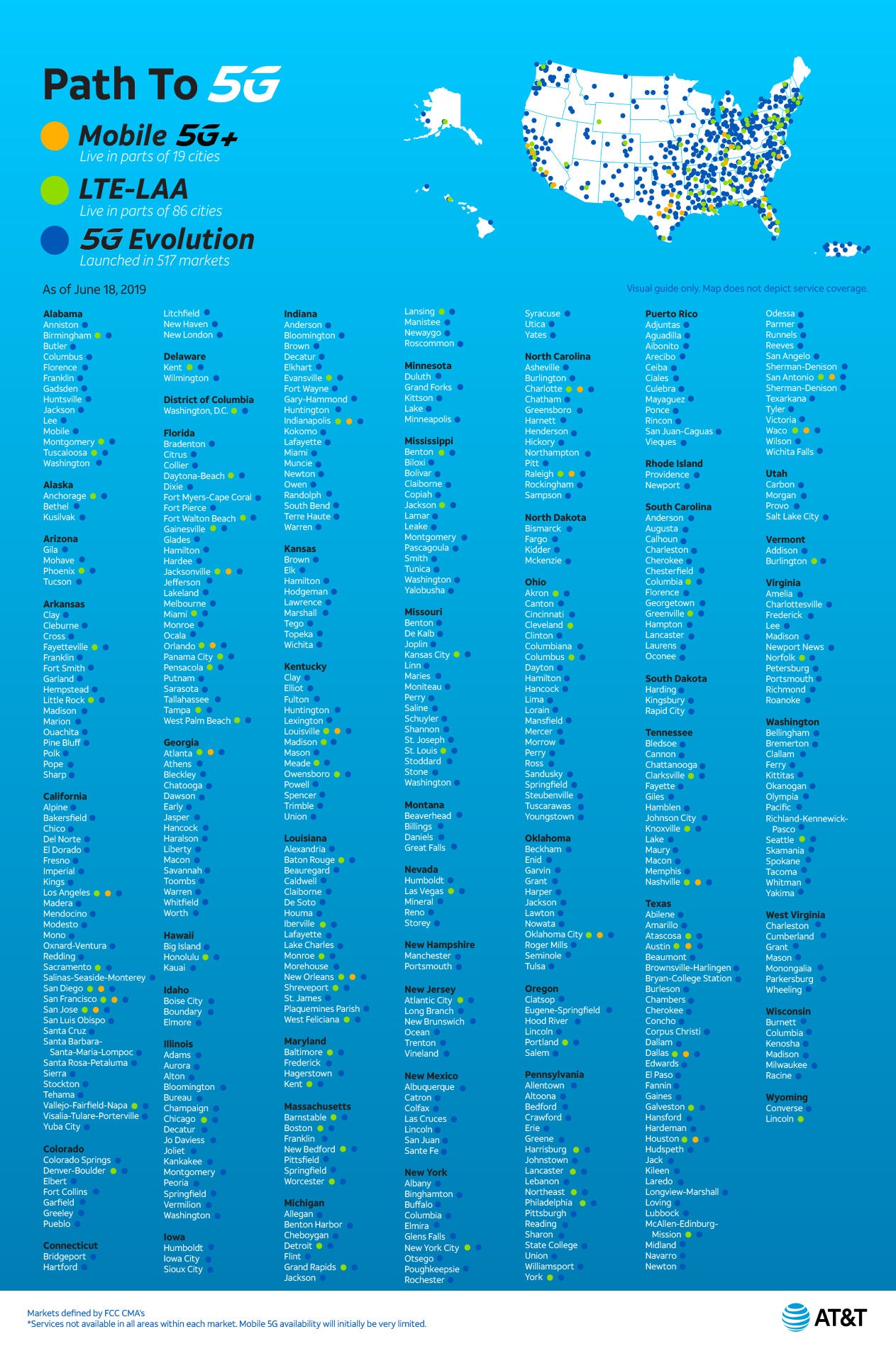AT&T 5G / 5G E network coverage map: which cities are covered?

Latest update: January 8th, 2021. Consumers and businesses can now access AT&T’s 5G network using a number of 5G capable phones. See the list here.
Jump to section:

AT&T coverage in early 2021
This mis-step aside, at the end of 2018, AT&T started to roll out a true 5G network across the nation using mostly millimeter wave (mmWave) technology like its competitor Verizon Wireless. mmWave uses high-frequency signaling to deliver incredible speeds, but at the cost of coverage as the signal cannot travel far and cannot penetrate buildings. Executives from the competitors have made fun of such networks calling them "hotspot 5G", referring to the scant coverage for those networks and mentioning that even closing a door might mean you stop getting coverage. To deal with that, carriers like AT&T will be installing a lot of base stations across major cities in the US and you can take a look at the current coverage below.
| 5G Evolution | 5G | 5G+ |
|---|---|---|
| Uses 4G LTE technology with some improvements. Not a true 5G network. | Sub-6GHz 5G network that will eventually cover the whole nation. | mmWave network that will provide record-breaking speeds at select locations like stadiums and dense urban spots. |
But first, let's take a look at AT&T's grand plan for 5G...
AT&T's Grand 5G Roll-Out Plan

Mobile 5G

Like most carriers in the US, AT&T started with very few 5G phones on offer, but quickly expanded its lineup.
AT&T currently uses two names to refer to its "true" 5G network: one is simply 5G, referring to the sub-6GHz network roll-out, and the other is 5G+, referring to mmWave spectrum that will provide ground-breaking speeds in only a few select locations.
In 2020, the carrier is rolling out small cells that will deliver service using the 39GHz (mmWave) band, also referred to as band n260. Coverage is also being deployed on lower frequency spectrum that will penetrate across a far wider area. It is important to know about this difference since mmWave signal will be limited to “pockets of dense areas” within cities, or simply said, it will be available in only very small spots in venues like stadiums and crowded downtown areas, but definitely not everywhere.
AT&T 5G+ Cities and Coverage
AT&T 5G+ is currently available in select parts of the following locations:
- AZ: Phoenix
- CA: Los Angeles, Menlo Park, Oakland, Redwood City, San Bruno, San Diego, San Francisco, San Jose, West Hollywood\
- FL: Jacksonville, Miami, Miami Gardens, Orlando
- GA: Atlanta
- IN: Indianapolis
- KY: Louisville
- LA: New Orleans
- MD: Baltimore, Ocean City
- MI: Detroit
- NC: Charlotte, Raleigh
- NV: Las Vegas
- NY: New York City
- OH: Cleveland
- OK: Oklahoma City
- PA: King of Prussia, Philadelphia
- TN: Nashville
- TX: Austin, Dallas, Houston, San Antonio, Waco
- WI: Milwaukee
Keep in mind that AT&T is actively developing the network and will be launching a lot of new markets throughout 2021, and we will be updating this article continuously.
Follow us on Google News











Things that are NOT allowed:
To help keep our community safe and free from spam, we apply temporary limits to newly created accounts: